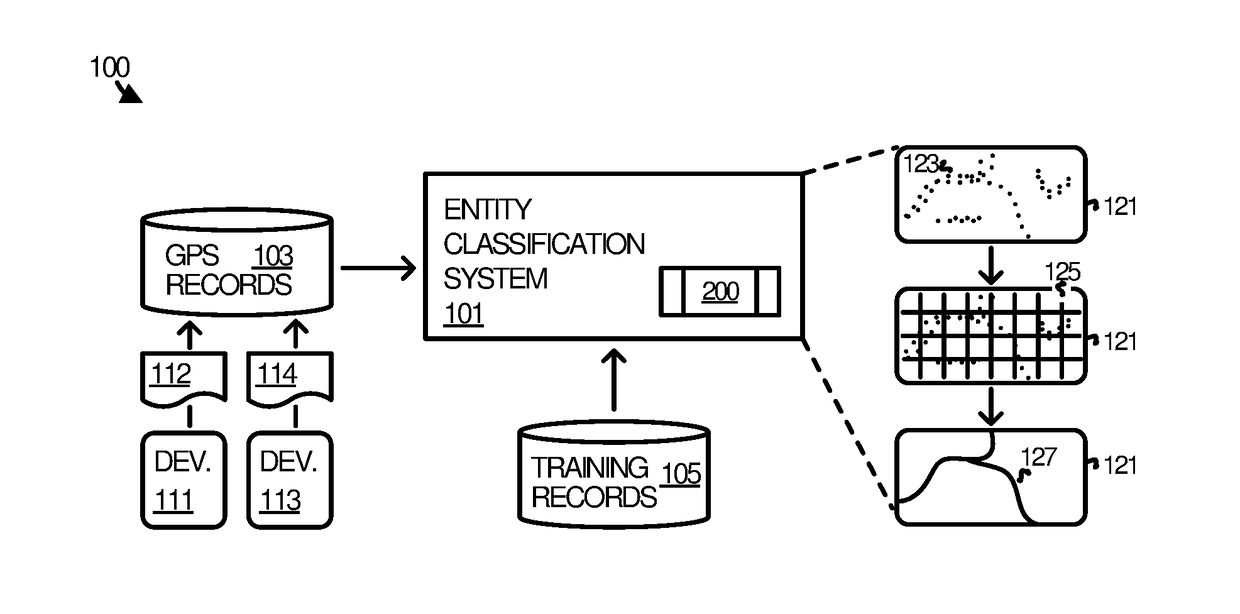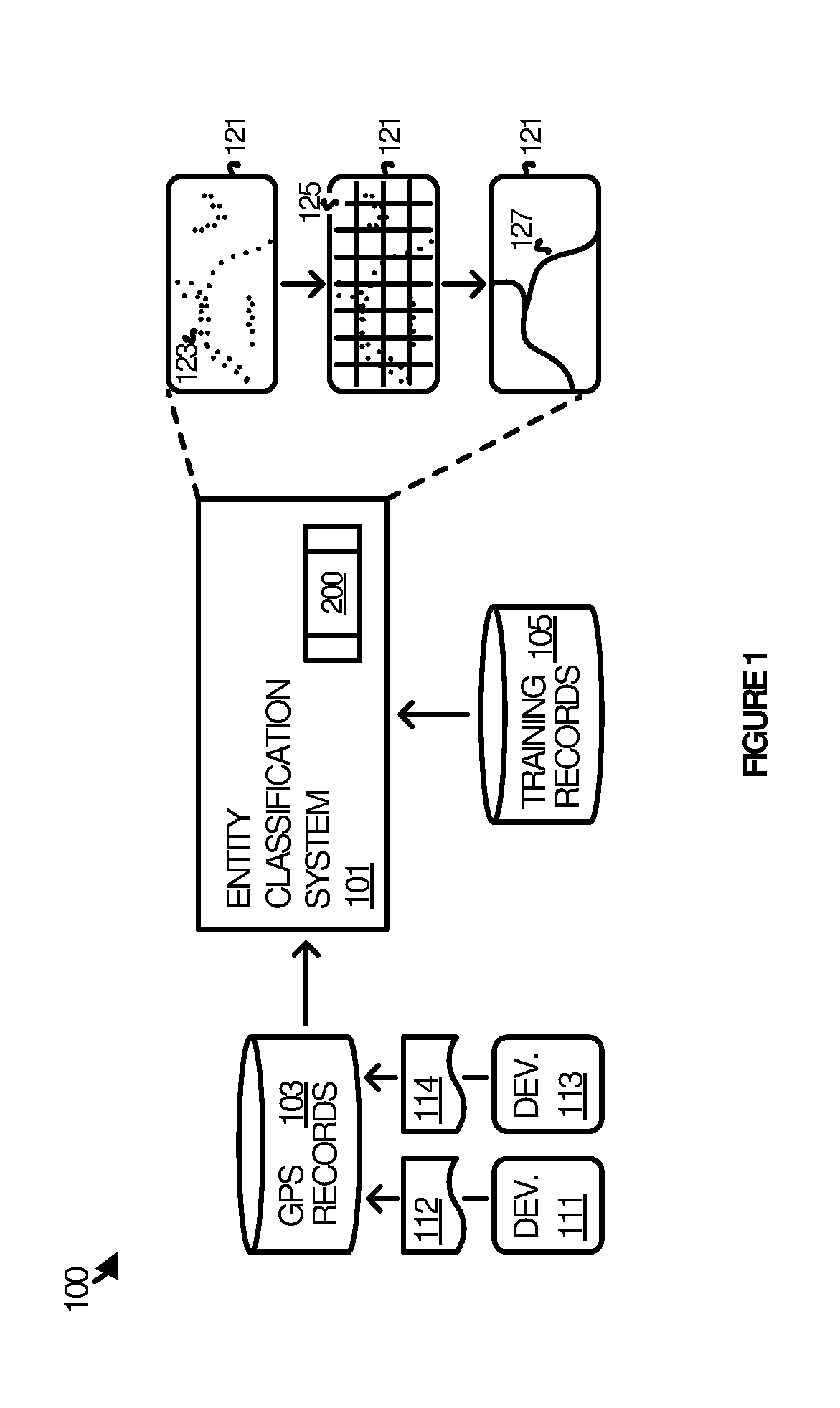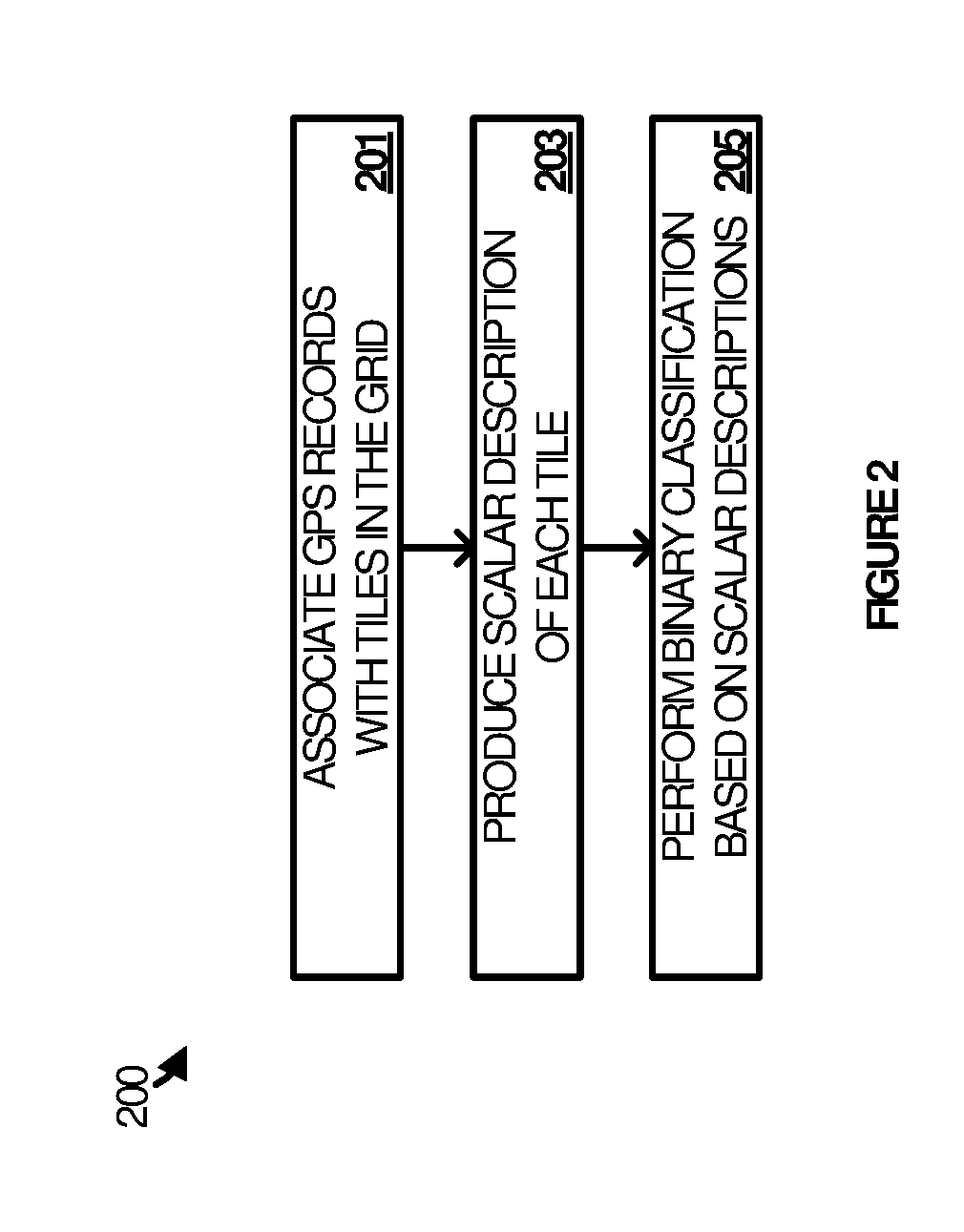Classifying entities in digital maps using discrete non-trace positioning data
- Summary
- Abstract
- Description
- Claims
- Application Information
AI Technical Summary
Benefits of technology
Problems solved by technology
Method used
Image
Examples
example 2
[0061]The method of Example 1 wherein the scalar description of each of the tiles in the area of interest comprises a feature vector having features and wherein producing the scalar description comprises: deriving the features from data included in the discrete positioning records; and constructing the feature vector from the features.
example 3
[0062]The method of Examples 1-2 wherein performing the binary classification of the tile comprises submitting the feature vector for the tile and other feature vectors for the other tiles as input to a binary classifier.
example 4
[0063]The method of Examples 1-3 wherein the other tiles comprise a subset of the tiles in the area that surround the tile in the grid.
PUM
 Login to View More
Login to View More Abstract
Description
Claims
Application Information
 Login to View More
Login to View More - R&D
- Intellectual Property
- Life Sciences
- Materials
- Tech Scout
- Unparalleled Data Quality
- Higher Quality Content
- 60% Fewer Hallucinations
Browse by: Latest US Patents, China's latest patents, Technical Efficacy Thesaurus, Application Domain, Technology Topic, Popular Technical Reports.
© 2025 PatSnap. All rights reserved.Legal|Privacy policy|Modern Slavery Act Transparency Statement|Sitemap|About US| Contact US: help@patsnap.com



